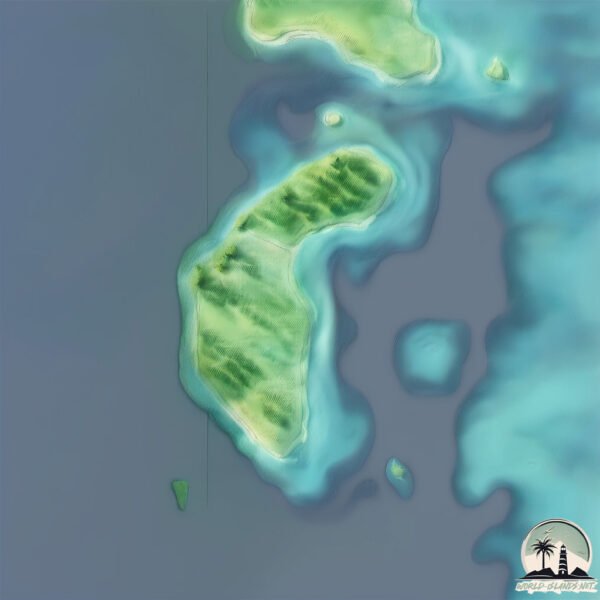Ofu

Welcome to Ofu, a Tropical island in the South Pacific Ocean, part of the majestic Pacific Ocean. This guide offers a comprehensive overview of what makes Ofu unique – from its geography and climate to its population, infrastructure, and beyond. Dive into the details:
- Geography and Size: Explore the island’s size and location.
- Climate and Weather: Weather patterns and temperature.
- Topography and Nature: Uncover the natural wonders of the island.
- Infrastructure and Travelling: Insights on reaching, staying, and making the most of your visit.
- News and Headlines: Latest News.
Geography and size of Ofu
Size: 1.313 km²
Coastline: 6.1 km
Ocean: Pacific Ocean
Sea: South Pacific Ocean
Continent: Oceania
Ofu is a Small Island spanning 1.3 km² with a coastline of 6.1 km.
Archipel: Tonga – A Polynesian kingdom of more than 170 South Pacific islands, known for their white beaches, coral reefs, and rich Polynesian culture.
Tectonic Plate: Pacific – The world’s largest tectonic plate, covering much of the Pacific Ocean, known for the Pacific Ring of Fire with extensive seismic and volcanic activity.
The geographic heart of the island is pinpointed at these coordinates:
Latitude: -18.70040343 / Longitude: -173.95800308
Climate and weather of Ofu
Climate Zone: Tropical
Climate Details: Tropical Rainforest Climate
Temperature: Hot
Climate Characteristics: This climate is typified by heavy rainfall throughout the year, high humidity, and consistently high temperatures, leading to lush rainforests and rich biodiversity. Seasonal temperature variations are minimal.
Topography and nature of Ofu
Timezone: UTC+13:00
Timezone places: Pacific/Enderbury
Max. Elevation: 14 m
Mean Elevation: 10 m
Vegetation: Open Woodland
Tree Coverage: 88%
The mean elevation is 10 m. The highest elevation on the island reaches approximately 14 meters above sea level. The island is characterized by Plains: Flat, low-lying lands characterized by a maximum elevation of up to 200 meters. On islands, plains are typically coastal lowlands or central flat areas.
Dominating Vegetation: Open Woodland
Characterized by sparsely distributed trees with open canopy allowing sunlight to penetrate, supporting grasses and shrubs underneath. Often found in drier or transitional environments. Ofu has a tree cover of 88 %.
Vegetation: 2 vegetation zones – Low Diversity Island
Islands with two distinct vegetation zones offer slightly more ecological variety. These zones could be due to differences in elevation, moisture, or other environmental factors. While still limited in biodiversity, these islands may offer a contrast between the two zones, such as a coastline with mangroves and an inland area with grassland.
Infrastructure and Travelling to Ofu
Does the island have a public airport? no.
There is no public and scheduled airport on Ofu. The nearest airport is Vava’u International Airport, located 12 km away.
Does the island have a major port? no.
There are no major ports on Ofu. The closest major port is NEIAFU, approximately 6 km away.
The mean population of Ofu is 66 per km². Ofu is Gently Populated. The island belongs to Tonga.
Continuing your journey, Vava’u is the next notable island, situated merely km away.
Ofu American Samoa - Pristine beaches, and Crystal-Clear Waters



Tonga is classified as Developing region: Regions characterized by lower income levels, with economies in the process of industrialization and modernization. The level of income is Lower middle income.
News – Latest Updates and Headlines from Ofu
Stay informed with the most recent news and important headlines from Ofu. Here’s a roundup of the latest developments.
Please note: The data used here has been primarily extracted from satellite readings. Deviations from exact values may occur, particularly regarding the height of elevations and population density. Land area and coastline measurements refer to average values at mean high tide.
